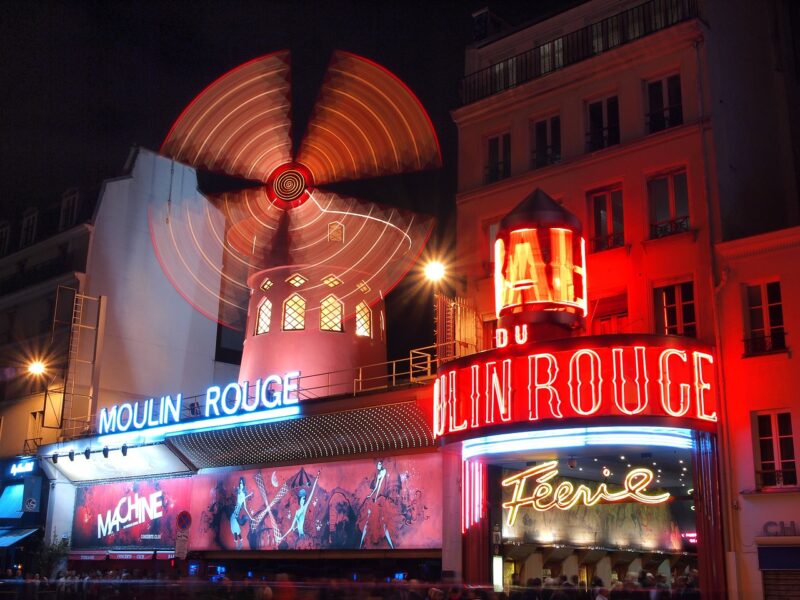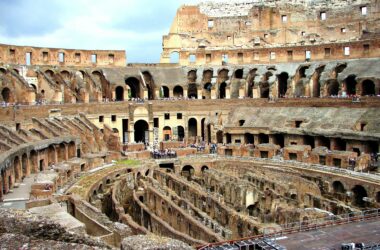Moulin Rouge, the iconic cabaret in Paris, stands as a symbol of extravagance, artistry, and the bohemian spirit. Since its opening in 1889, it has enchanted audiences with its lavish performances and vibrant atmosphere. From its rich history to its modern-day allure, Moulin Rouge continues to captivate the world with its timeless charm.
Table of Contents
- History of Moulin Rouge
- Location and Architecture
- The Iconic Windmill
- Famous Performers and Acts
- Moulin Rouge and the Belle Époque
- Art and Posters
- Moulin Rouge in Popular Culture
- The Can-Can Dance
- Modern Day Moulin Rouge
- Cuisine and Dining Experience
- The Impact of Moulin Rouge on Parisian Nightlife
- Moulin Rouge and LGBTQ+ Community
- Behind the Scenes
- Conclusion
- FAQs
History of Moulin Rouge
Founded by Joseph Oller and Charles Zidler, Moulin Rouge opened its doors in the heart of Montmartre. The venue quickly became synonymous with the Belle Époque era, offering a dazzling escape from the everyday life of Parisians. Over the years, it evolved, surviving wars, economic downturns, and societal changes, always maintaining its status as a premier entertainment destination.
Location and Architecture
Nestled at the foot of Montmartre, the Moulin Rouge is a striking landmark. Its architecture, characterized by the vibrant red windmill perched on its roof, is an homage to the traditional windmills that once dotted the area. The interior, with its opulent decor, captures the essence of 19th-century Parisian extravagance, featuring plush velvet, ornate chandeliers, and intricate murals.
The Iconic Windmill
The red windmill of Moulin Rouge is more than just an architectural feature; it is a symbol of the cabaret’s whimsical spirit and artistic flair. Erected during the venue’s inception, the windmill represents the free-spirited nature of Montmartre and serves as a beacon of entertainment. Over the years, it has become an enduring icon, immortalized in countless photographs and artworks.
Famous Performers and Acts
Moulin Rouge has been a launching pad for many celebrated artists. Performers like Edith Piaf, Josephine Baker, and Frank Sinatra have graced its stage, each leaving an indelible mark on its storied legacy. The venue is renowned for its spectacular shows, which blend music, dance, and elaborate costumes to create an unforgettable experience.
Moulin Rouge and the Belle Époque
The Belle Époque period was a time of cultural flourishing in Paris, and Moulin Rouge was at its heart. The cabaret epitomized the era’s exuberance and artistic freedom, drawing in a mix of aristocrats, artists, and ordinary citizens. It was a melting pot of creativity, influencing art, literature, and fashion far beyond its walls.
Art and Posters
The visual identity of Moulin Rouge has been shaped by iconic posters and artworks, most notably by Henri de Toulouse-Lautrec. His depictions of the cabaret’s lively atmosphere and its colorful characters have become synonymous with its image. These artworks not only promoted the shows but also cemented Moulin Rouge’s place in the annals of art history.
Moulin Rouge in Popular Culture
Moulin Rouge’s influence extends into popular culture, with numerous films, books, and songs drawing inspiration from its legacy. The 2001 film “Moulin Rouge!” directed by Baz Luhrmann, brought a new wave of attention to the cabaret, introducing it to a global audience and showcasing its enduring allure.
The Can-Can Dance
The high-energy Can-Can dance is perhaps the most iconic element of Moulin Rouge’s performances. Originating in the early 19th century, this dance, with its high kicks and raucous energy, became a symbol of the cabaret’s exuberance. Today, it remains a staple of the shows, thrilling audiences with its athleticism and artistry.
Modern Day Moulin Rouge
While steeped in history, Moulin Rouge continues to evolve. Today, it offers a range of performances that blend traditional elements with modern spectacle. Visitors can expect breathtaking shows featuring world-class performers, dazzling costumes, and innovative choreography, all set against the backdrop of its historic ambiance.
Cuisine and Dining Experience
A visit to Moulin Rouge is not complete without experiencing its culinary delights. The venue offers exquisite dining options, allowing guests to indulge in gourmet French cuisine while enjoying the show. Signature dishes, crafted by top chefs, complement the visual feast of the performances, creating a holistic sensory experience.
The Impact of Moulin Rouge on Parisian Nightlife
Moulin Rouge has played a pivotal role in shaping Parisian nightlife. Its success paved the way for other entertainment venues, transforming the city’s nocturnal landscape. The cabaret’s influence is evident in the vibrant nightlife culture that defines Paris today, making it a cornerstone of the city’s entertainment scene.
Moulin Rouge and LGBTQ+ Community
Inclusivity and representation have always been part of Moulin Rouge’s ethos. The cabaret has long celebrated diversity, providing a platform for LGBTQ+ performers and audiences. This spirit of acceptance and celebration has made it a beloved venue within the community, reinforcing its reputation as a place where everyone can enjoy the magic of performance.
Behind the Scenes
The magic of Moulin Rouge is not just on stage; it extends behind the scenes. The production of each show involves meticulous planning, from costume design to choreography. Insights from staff and performers reveal the dedication and passion that go into creating the spectacular performances that have become the hallmark of Moulin Rouge.
Conclusion
Moulin Rouge is more than just a cabaret; it is a cultural institution that embodies the spirit of Paris. Its rich history, iconic performances, and enduring influence make it a must-visit destination. As it continues to evolve, Moulin Rouge remains a testament to the power of art, music, and dance to captivate and inspire.
FAQs
What is the best time to visit Moulin Rouge?
The best time to visit Moulin Rouge is during the evening when the cabaret comes alive with vibrant performances and a lively atmosphere.
Are there age restrictions for attending shows?
Yes, Moulin Rouge shows are generally suitable for audiences aged 18 and over due to the nature of the performances.
How to book tickets for Moulin Rouge?
Tickets for Moulin Rouge can be booked online through the official website or via authorized ticket vendors. Early booking is recommended to secure the best seats.
What should I wear to a Moulin Rouge show?
Guests are encouraged to dress elegantly, with smart casual attire being the minimum requirement. Formal wear enhances the experience, aligning with the venue’s glamorous ambiance.
Can you take photos during the performances?
Photography is not allowed during the performances to ensure an uninterrupted experience for all guests and to protect the artists’ work.









